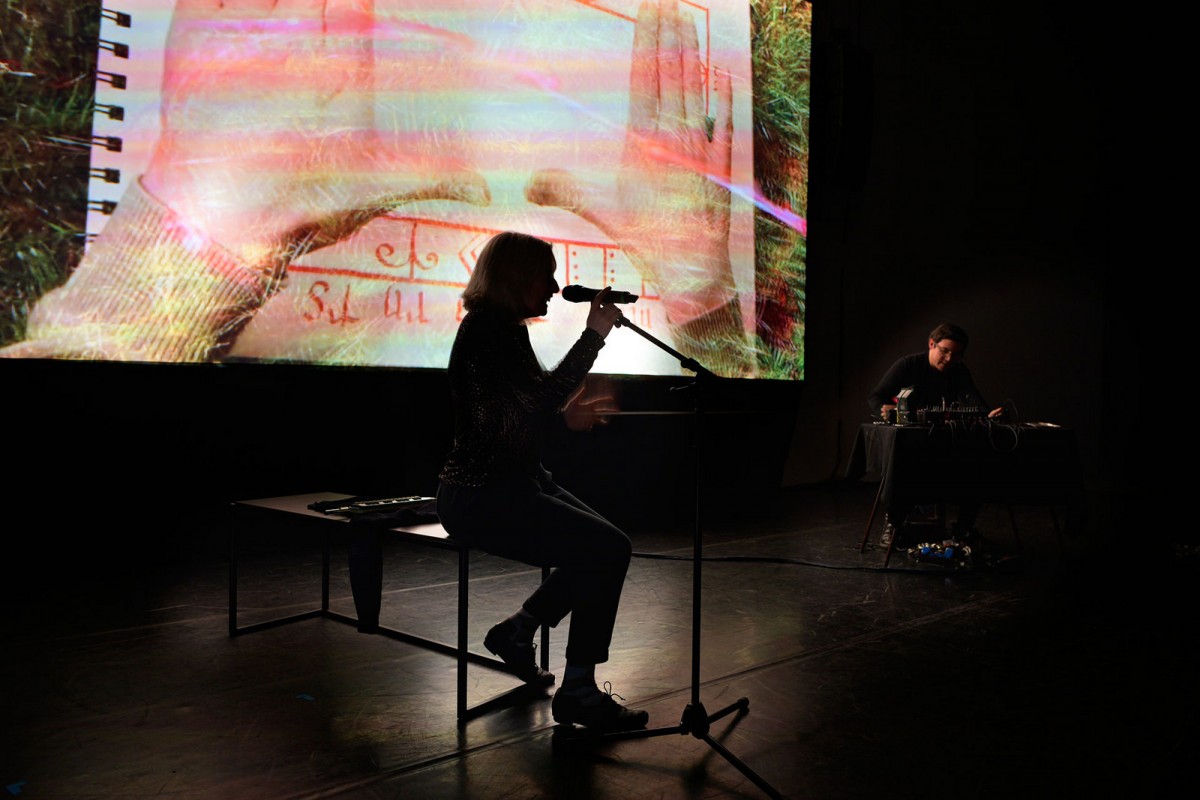Sunday 25 February 16:08

Jennifer Walshe and Mario de Vega at Sonic Acts Academy 2018
by Dulce da Rocha Gonçalves
Jennifer Walshe and Mario de Vega brought a sensory recipe for the experience of the uncanny to the opening night of Sonic Acts 2018. Uncanny, not as something strange, but as something strangely familiar.
The English translation of Freud’s concept misses an essential reference of the original German word, the Unheimlich, the un-homely (in its literal translation). Freud’s idea of the uncanny draws on the feeling of unrest created from the encounter with a situation that is no longer familiar. As an artistic technique it involves alienating a familiar element into an unfamiliar one.
How does the audiovisual performance of Jennifer Walshe's An Gléacht create this experience for me, of the strangely familiar? How does it generate the uncanny? And, most of all, how does it induce this unstable position in the body in my seat?
What do I see? On screen I see a body in a bed and a face covered in petals, a mouthful of seashells, carved runes, blueberries and animal organs, green woods in the wind, crafted charms, talismans and amulets. And what are my eyes telling my body? First, they are telling me that I am near these objects, that I share the position of an embodied camera, that the camera is the surrogate for my eyes. And, secondly, my eyes tell me that I recognise these signs, even if I recognise them as a communication vehicle for the idea of mysticism. But it is not the mysticism in the images that is unfamiliar.
What do I hear? At first, I am unable to find an answer to this question. And then, a delayed recognition: wait, I know these sounds. But my eyes are confusing me, because I don’t usually have an image for these sounds. They are the sounds of my body, my organs working, my muscles contracting, they are sounds that I hear coming from a place that has no image. These sounds are not unfamiliar.
What is it that makes this performance strangely familiar? What is it that creates this disturbance in me? It is neither sound nor image, but their overlapping, and in this overlapping I am unable to find my body. Speakers and screen become technological surrogate operating in two different positions on the spectrum. The soundtrack challenges what my eyes are seeing because what I hear has no image, yet the screen tells me differently. And this difference between my eyes and my ears demands comprehension to the body in my seat. Amid sensory confusion, we recall Gaston Bachelard: “Being does not see itself. Perhaps it listens to itself.”